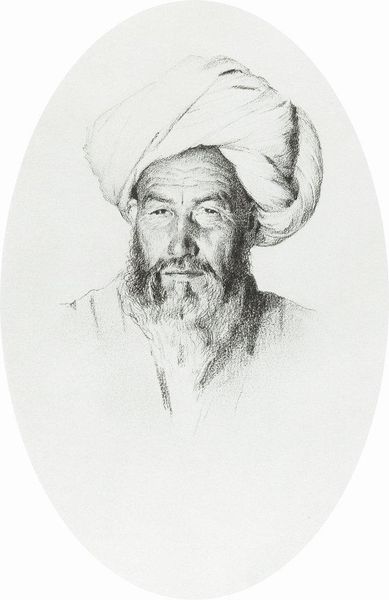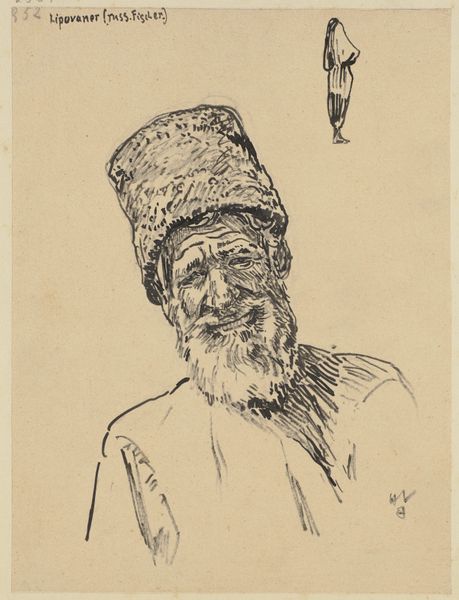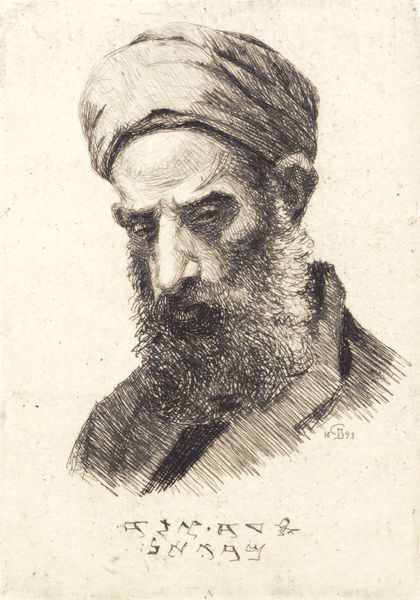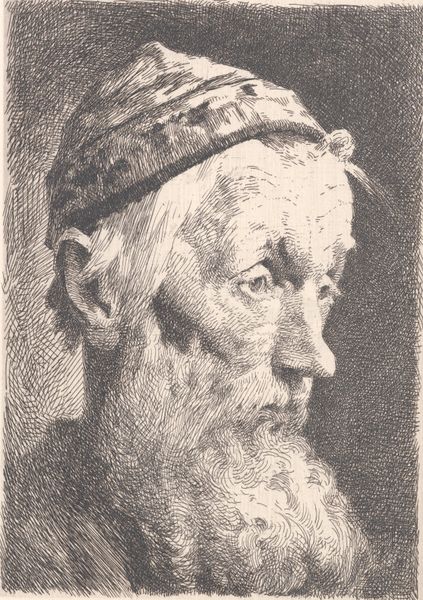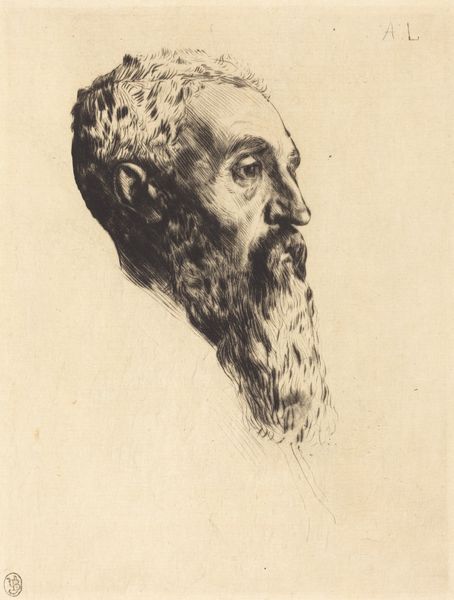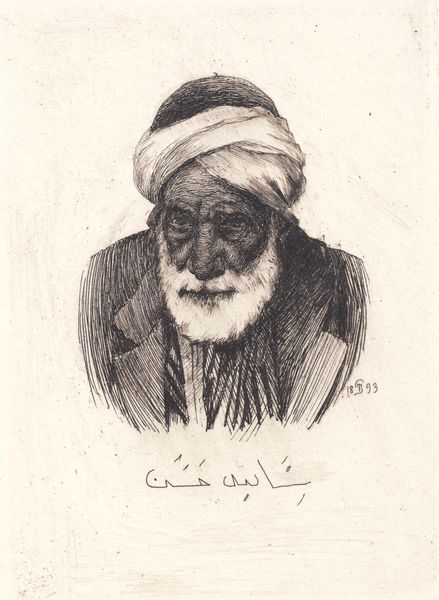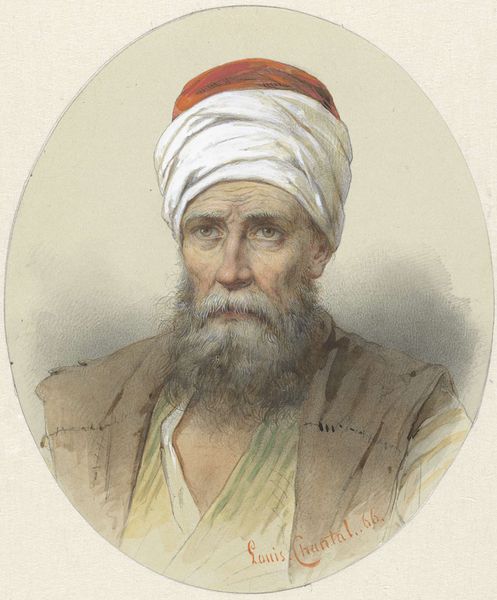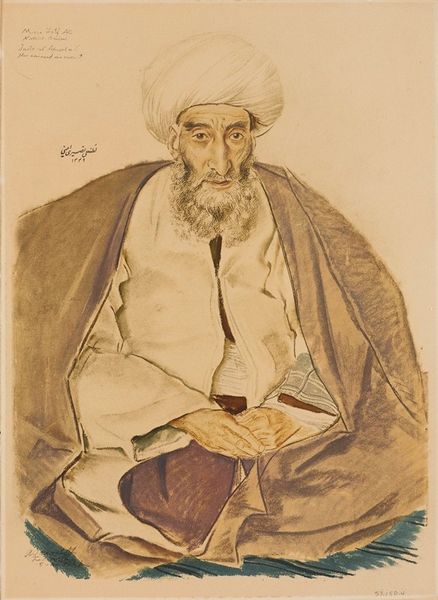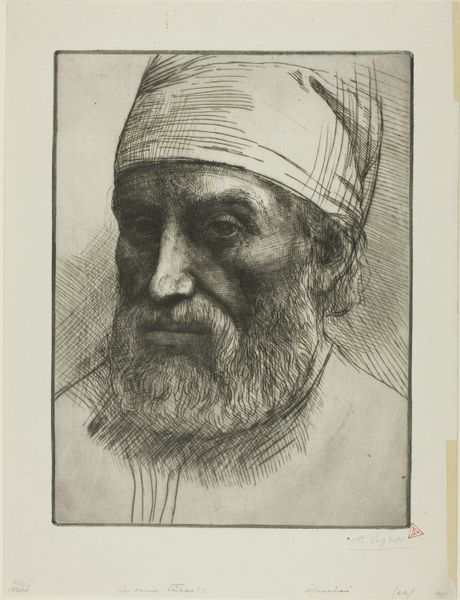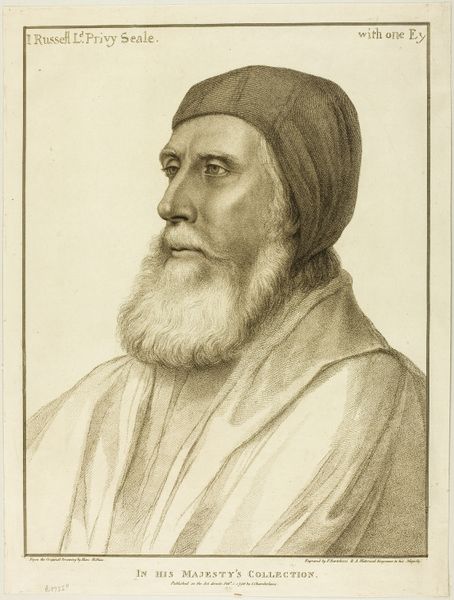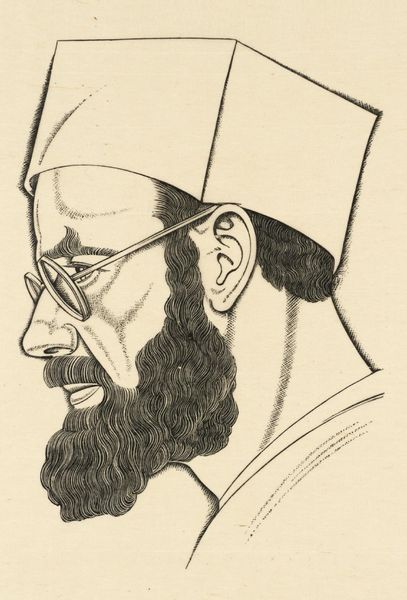
drawing, pencil
#
portrait
#
drawing
#
pencil
#
portrait drawing
#
realism
Copyright: Public domain
Ivan Bilibin rendered this monochromatic portrait of a man in 1922, using what looks like graphite or charcoal, a medium that invites intimacy through the pressure of the hand. There's a real tension in this drawing between the specificity of the man's face and his kind of dissolving presence. The hatching across the man’s beard and shoulders is so intense, it almost dematerializes the figure. It’s like the charcoal is pushing back against the form, questioning its solidity. Look how the cap sits so firmly, in contrast to the face. Its dense shadow creates a focal point, and from here your eye starts to take in every mark. I’m reminded of the drawings of Kathe Kollwitz, who also used charcoal to convey a sense of social and political urgency. Both artists embrace the inherent messiness of the medium, reminding us that art is as much about questioning as it is about representation.
Comments
No comments
Be the first to comment and join the conversation on the ultimate creative platform.
